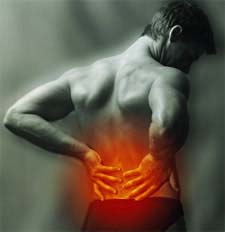The Gotland Low Back Pain Study
 Just another study of manual therapy for low back pain?
Just another study of manual therapy for low back pain?
What seems to be new in this study by researchers at Uppsala University in Sweden is the duration of follow-up.
First, the details.
- 160 adults with acute or subacute low back pain with or without pain radiating into the legs participated in the study.
- They were randomly assigned to standardized optimized activating care (control) or a comprehensive manual therapy program that including specific corticosteroid injections.
- Manual therapy is hands-on treatment to restore motion to the joints as provided by physical therapists, chiropractors, and other rehabilitation team members.
- Treatment lasted 10 weeks, and the patients were followed for 2 years.
- Sick leave was the main outcome measured.
And, the results.
- After 10 weeks, significantly more patients receiving manual therapy returned to work vs the control group.
- Among those who were on sick leave at the start of the study, significantly fewer in the manual therapy group remained on sick leave vs the control group.
- There were no other differences between the treatments.
- And, there were no significant differences between the groups at 2 years.
The bottom line?
The authors concluded, “The manual therapy program used in this study decreased sick leave and increased return to work more than the standardized optimized activating care only up to 10 weeks but not up to 2 years.”
An comparison of manual therapy vs exercise published in 2003 concluded that chronic pain patients getting manual therapy were more likely to return to work over a 1 year of follow-up.
Dr. Richard Branson, who is chief chiropractic consultant for Blue Cross Blue Shield of Minnesota, contributed a chapter on spinal manipulation to the text, Integrating Complementary Medicine Into Health Systems. In it, he prepared a table that nicely summarizes the results of studies of spinal manipulation vs other conservative treatments of chronic low back pain prior to 2001.
According to Dr. Branson, “The average patient receiving manipulation experienced a better outcome than 54% to 75% of the patients receiving the comparison treatment, depending on the specific outcome variable.
9/27/08 10:40 JR